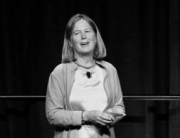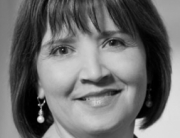 Hewlett-Packard’s (HPQ) fiscal 2014 starts today. Sue Barsamian, senior VP, worldwide indirect sales, and her team are working overtime to ensure channel engagements get off to a strong start. But what exactly does that mean? Barsamian discussed HP’s fiscal 2014 channel strategy and priorities. Here’s a recap.
Hewlett-Packard’s (HPQ) fiscal 2014 starts today. Sue Barsamian, senior VP, worldwide indirect sales, and her team are working overtime to ensure channel engagements get off to a strong start. But what exactly does that mean? Barsamian discussed HP’s fiscal 2014 channel strategy and priorities. Here’s a recap.
When did you first learn about the new opportunity (senior VP, worldwide indirect sales) and what was your initial reaction?
Barsamian: My initial reaction was super-excited. Bill [Veghte] came onboard [as EVP and GM, Enterprise Group] about nine weeks ago. He spent about three weeks assembling the structure of the team. Our discussions were all about how HP goes to market more effectively with partners.
How have you personally engaged with channel partners in recent weeks and what have been the takeaways in your mind?
Barsamian: I’ve personally met with more than 40 partners, and our team has been at conferences like BoB to really engage in the partner dialog.
There are two takeaways and they are consistent across the Americas, Europe and elsewhere.
First, partners continue to be excited about the HP portfolio. We’re helping partners to push beyond hardware to software and services. We’ve got the portfolio; here at HP, partners have a one-stop shop for a lot of the assets they need. Whether it’s cloud, security, mobility, big data — HP has assets across that spectrum for partners.
The second consistent thing we’ve heard involves simplicity. Quite frankly we had some work to do in terms of simplicity and ease of business. We’ve always heard from partners that the money from HP can be good. It’s too hard to figure out how to get the money, though. You shouldn’t need a Ph.D. in calculus to figure it out.
We’re looking at every process — from configuring a quote to getting a price and using our website… it all has to be easier.
We made big commitments to the channel at Global Partner Conference 2013 in February. We have a platform, called HP Unison, to deliver that simplicity. In the period between February 2013 and March 2014 — our next global partner conference — there are a significant number of milestones that we’re deploying and completing to improve simplicity.
HP’s new fiscal year starts Nov. 1. What are your top priorities with partners?

Barsamian: We’re super-focused on our portfolio and growth plans, whether it’s marketing or demand generation flow or making sure our business units have a channel lens on everything.
How much of your focus will involve traditional hardware and infrastructure (converged data center, servers, storage, network) vs. pure cloud offerings (HP Cloud, Autonomy, etc.)?
Barsamian: We’re doing both. Part of the answer depends on the segment the partner sells into. Within the traditional partner base, you have siloed vs. converged opportunities. About 20 percent of the transactions will close as converged — but the conversations about converged exceed that figure. Customers want to understand how to make their IT data centers more converged. We already have converged solutions, and you’ll see more in the first six months of our fiscal year. Virtualization and Big Data are also at the top of our list. They will be, for all intents and purposes, channel-exclusive.
Within large enterprises we’re seeing a growing move toward private cloud while bursting out to do some IaaS and PaaS. And in the SMB, clearly at the low end you have a very different dynamic. They are jumping to the SaaS-based offerings at a faster clip.
There are several flavors to our cloud partner program. For partners who are building private cloud infrastructure, we have the HP CloudSystem. We also have our OpenStack cloud operating system and our HP Cloud Builder program is very good. For partners that are CSPs (cloud services providers), they can leverage our Cloud Agile program.
Let’s shift to new innovations. CEO Meg Whitman has spoken a lot about next-generation opportunities — HP Moonshot servers, 3D printers, Software-defined Networking (SDN). How are those next-generation opportunities shaping up for the channel?
Barsamian: SDN and Moonshot are here today and in the partner portfolio. When it comes to OpenFlow-compatible switches, we have a huge number from which to choose. We have the SDN controller. We announced the federated support with Nicira (from VMware). We have a lot going on in SDN. For partners that carry our networking portfolio, the SDN future with HP is here today.
Moonshot is a bit newer. There’s tremendous interest in Moonshot. The ARM version to complement Atom has been announced.
As a partner, you want to know you’re working with a vendor that can evolve your business into the future. That’s exciting for partners. My job is to balance that enthusiasm. There’s a ramp associated with Moonshot. We’re excited about it.
HP now sells Chromebooks and Google Apps. Is that an opportunity that stretches into enterprise or more for SMB partners?

Barsamian: It’s on my radar. I don’t have a summary for you yet on how it will integrated with the Enterprise Group. But think of it this way: Our Just Right IT offers storage, servers and networking in SMB right-sized offerings. Next, we need to determine the ideal touch point between Just Right IT and the things we’re doing in our Printing and Personal Systems (PPS) group.
Are you seeing an evolution beyond traditional “resellers” — where do VARs, MSPs and CSPs (cloud services providers) fit in the HP mix?
Barsamian: Our current partner mix is becoming more multifaceted on two dimensions. First is their business model. Whether a distributor or a traditional reseller, everyone is increasing their mix of software and services. We’re helping them to do that. We’re increasing the number of portfolio partners we have. Partners of ours that sell servers, storage and networking likely started out with us on servers. But we’re increasing the mix.
In the cloud market, we’re seeing distributors like Ingram and Synnex become cloud aggregators. In terms of CSPs, in some cases they are building and hosting; in other cases they are aggregating. And that’s an opportunity for HP’s public cloud.
What steps is HP taking right now and throughout the new fiscal year to ensure channel relationships become long-term, deep engagements rather than purely “transactional” PC and server sales?
Barsamian: It’s an “and” — not an “or.” The transactional business, and the fact that the sales ticker ticks very fast, is an impressive number for HP. It’s a competitive advantage we don’t want to move away from. But it has to be augmented with software, services and solutions sales. The key thing I want to get across: HP’s differentiation is the breadth of our portfolio. Partners can’t find that elsewhere.






